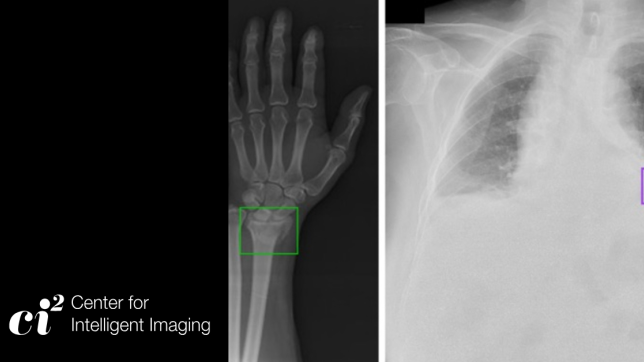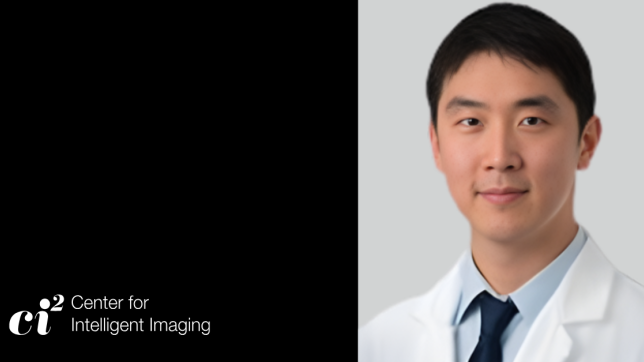Each November, the University of California, San Francisco, Center for Intelligent Imaging (ci2) recognizes Lung Cancer Awareness Month. We highlight clinical advancements in lung cancer research that utilize artificial intelligence (AI).
Jae Ho Sohn, MD, MS, focuses his research on improving lung cancer detection and treatment. His work at the Sohn Lab includes clinical research on novel imaging modalities in lung machine resonance imaging (MRI).
Research, led by ci2's Jae Ho Sohn, MD, MS, evaluated over 2,500 patients who experienced pneumothorax complications requiring chest tube placement, which is costly and adds clinical risks. The study, "Development and validation of a risk nomogram predicting pneumothorax requiring chest tube placement post-percutaneous CT-guided lung biopsy," was published in BMC Medical Imaging.
This two-center retrospective study included patients who underwent CT-guided lung biopsy from between 1994 and 2023. Emphysema severity was quantified and categorized on a 3-point scale using a previously published algorithm, and a risk calculator was developed using forward variable selection and logistic regression. "The developed nomogram predicts age over 60, non-prone position during biopsy, and severe emphysema to be most predictive of pneumothorax requiring chest tube placement following CT-guided lung biopsy," the authors conclude.
Further research in Spring Nature by Jae Ho Sohn, MD, MS, and collaborators,"Assessment of delays in diagnosis of lung cancer in interstitial lung disease," evaluates diagnostic delays in lung cancer among patients with interstitial lung disease (ILD). The authors retrospectively studied ILD patients with concurrent lung cancer to assess causes of missed detection.
"Half of lung cancer cases in ILD patients had diagnostic delays, mainly due to parenchymal masking," the authors said. "This study shows that lung cancer diagnosis is often delayed in ILD patients (avg. > 3 years). Clinicians should stay alert for malignancy in peripheral fibrotic regions with slow-growing nodules. Despite no clear survival impact, future work should assess the risks and benefits of earlier detection."
E Han Dao, MD, joined Jae Ho Sohn, MD, MS, in authoring "Balancing Diagnostic Certainty and Locoregional Recurrence Risk in Stage I Non-Small Cell Lung Cancer." The study, published in RSNA Radiology, analyzed patients with stage I non-small cell lung cancer. This retrospective research suggests that widespread lung cancer screening and increased detection of incidental nodules have led to more patients presenting with early-stage cancer. "For patients with stage I non-small cell lung cancer, the choice between obtaining tissue diagnosis and proceeding directly to surgery remains an important dilemma for the thoracic tumor board," the authors write.
For more research and news, visit the UCSF ci2 blog.



